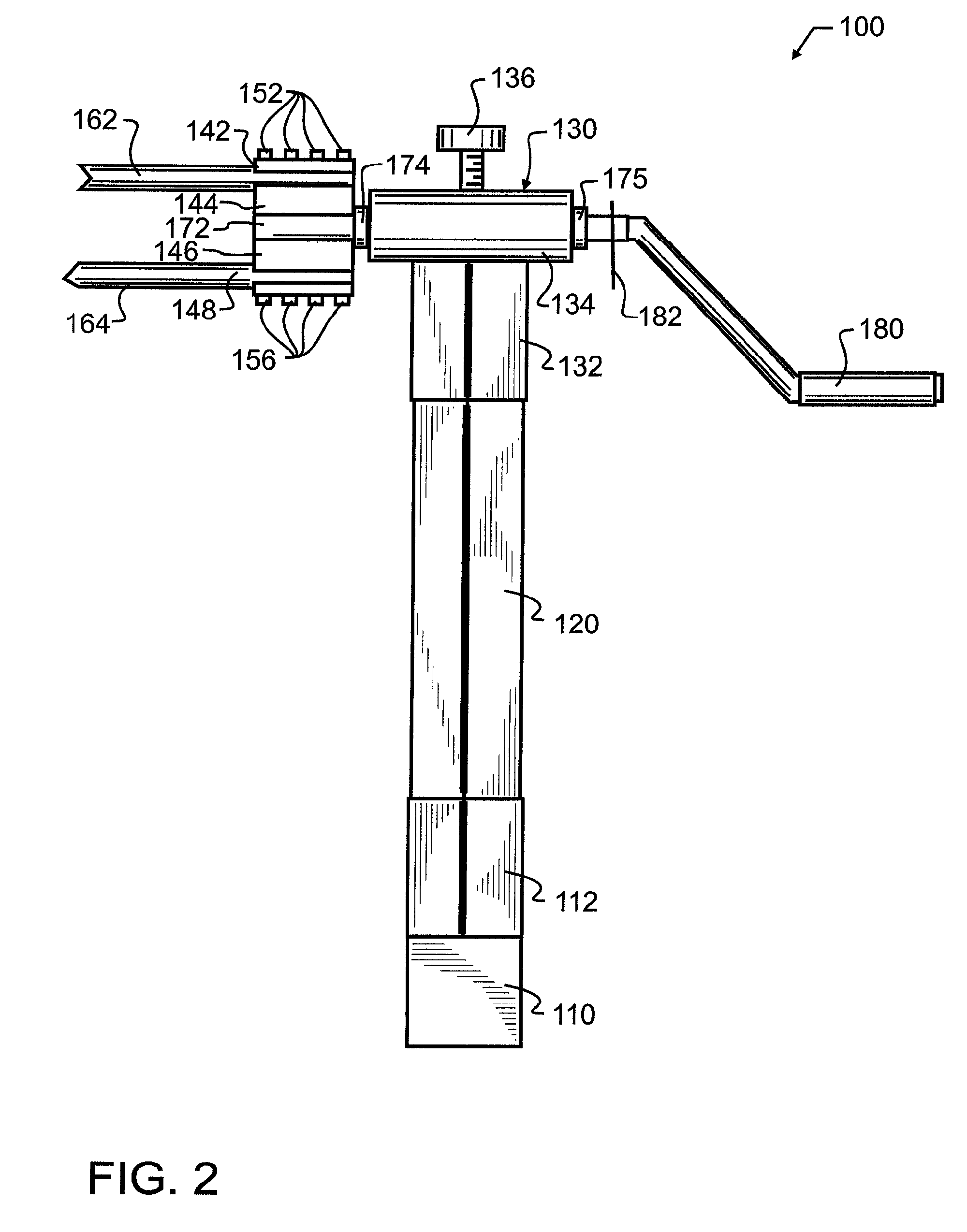Transportable blanket roller
a blanket roller and blanket technology, applied in the field of webtype materials, can solve the problems of low softening and combustion temperature of plastic sheets, and temperature limits, so as to reduce manufacturing, shipping and storage, and reduce manufacturing costs. , the effect of reducing the number of shops
- Summary
- Abstract
- Description
- Claims
- Application Information
AI Technical Summary
Benefits of technology
Problems solved by technology
Method used
Image
Examples
Embodiment Construction
[0022]In one preferred embodiment of the invention illustrated in FIG. 1, the invention is in combination, a land vehicle 10 having a trailer hitch receiver 12, a transportable insulated blanket roller 100 supported upon land vehicle 10 by insertion within trailer hitch receiver 12, and an insulated blanket 20. This preferred combination best illustrates both the mobility of the present invention, and the ease by which benefit may be garnered. As may be apparent, to use transportable insulated blanket roller 100, an insulated blanket 20 is passed so that a leading edge 22 thereof passes between material tubes 162, 164. Only a small leading edge 22 is required, preferably sufficient to ensure that material tubes 162, 164 will capture insulated blanket 20 when handle 180 is rotated in the direction illustrated by arrow 190. Handle 180 will be rotated until insulated blanket 20 is entirely wound about material tubes 162, 164. A band of flaccid material such as a strap, cord, cinch stra...
PUM
 Login to View More
Login to View More Abstract
Description
Claims
Application Information
 Login to View More
Login to View More - R&D
- Intellectual Property
- Life Sciences
- Materials
- Tech Scout
- Unparalleled Data Quality
- Higher Quality Content
- 60% Fewer Hallucinations
Browse by: Latest US Patents, China's latest patents, Technical Efficacy Thesaurus, Application Domain, Technology Topic, Popular Technical Reports.
© 2025 PatSnap. All rights reserved.Legal|Privacy policy|Modern Slavery Act Transparency Statement|Sitemap|About US| Contact US: help@patsnap.com



